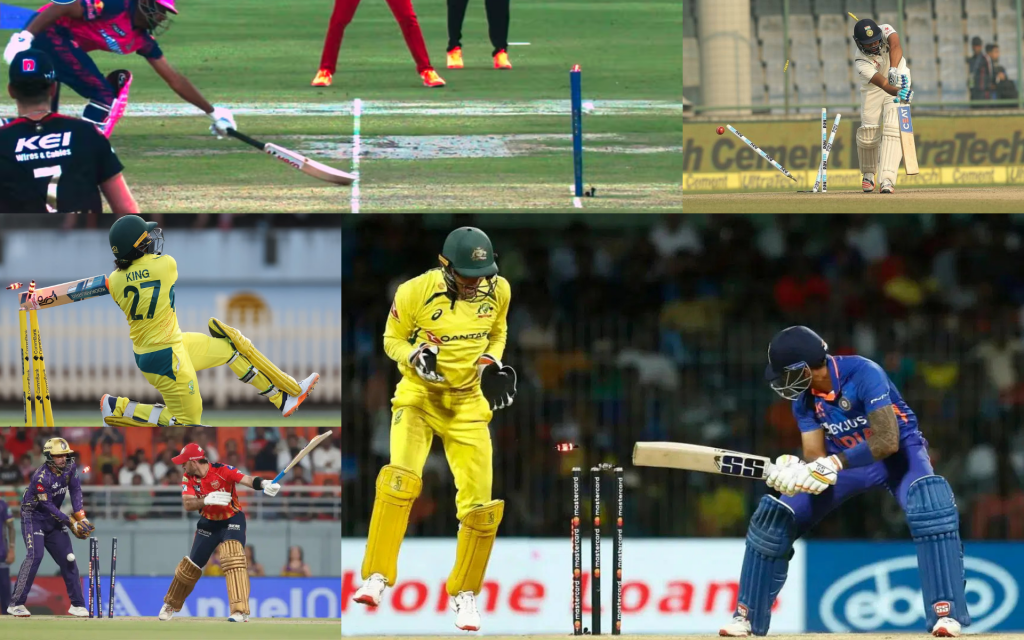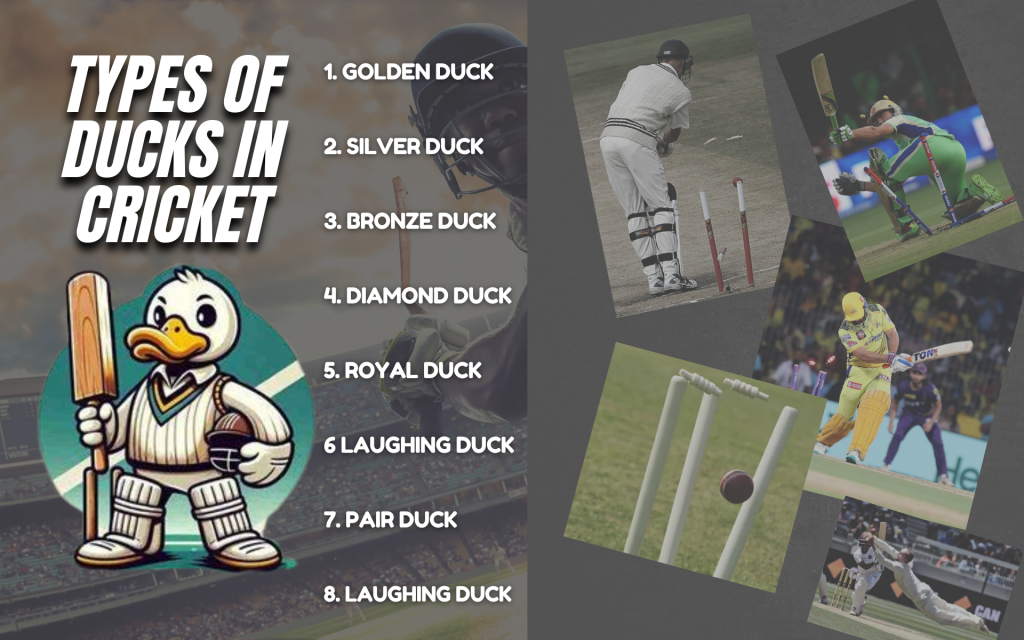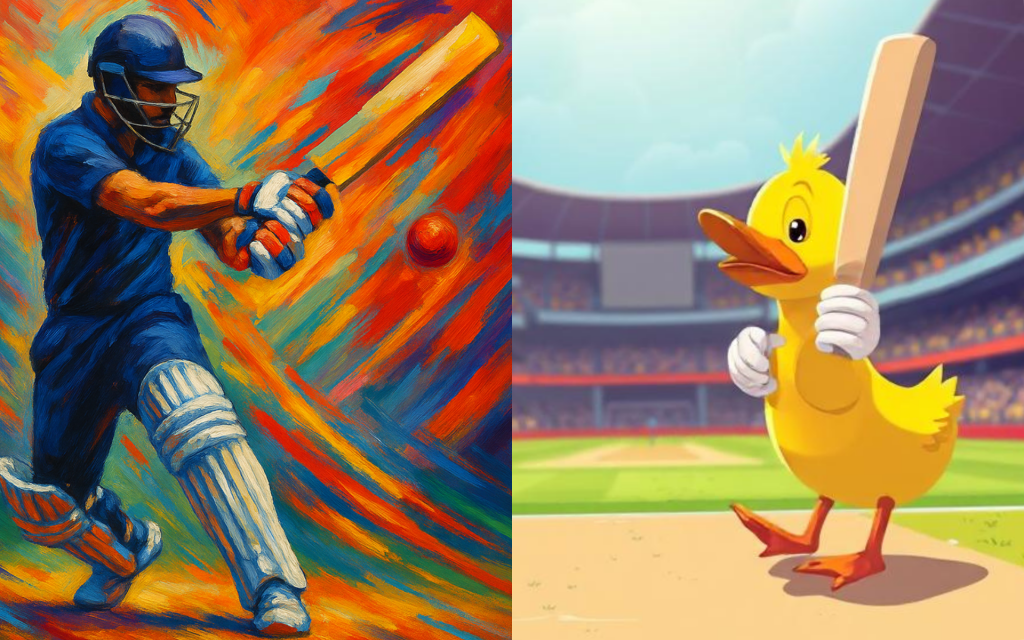
In cricket, getting out for zero is called a duck. It’s one of the most frustrating moments for any batter. But not all ducks are the same. Over the years, fans and commentators have created different names to describe how a batter gets out without scoring. In this article, you’ll learn about the types of ducks in cricket and their terms with meanings.
List of Different Types of Ducks in Cricket
Understanding these different types of ducks can make watching cricket more interesting and help you follow match commentary better. Whether you’re a casual fan or playing fantasy cricket, knowing what each duck means will give you deeper insight into the highs and lows that players experience on the field.

1. Golden Duck
This is the most well-known type. A golden duck happens when a batter gets out on the very first ball they face. It shows no time to settle. One mistake, and you’re gone. This type is common in T20s and ODIs. Bowlers celebrate it; batters dread it.
2. Silver Duck
If a player is dismissed after facing just the second ball without scoring, that’s referred to as a silver duck. The batter survives one delivery but fails on the next. It’s slightly better than a golden duck, but only just.
3. Bronze Duck
Less common than the first two. A bronze duck occurs when a batter is dismissed on the third ball without scoring. This type shows the player had a bit more time but couldn’t capitalize.
4. Diamond Duck
This is a rare and unlucky dismissal. A diamond duck happens when a player gets out without facing a single ball. Usually, it’s due to a run-out at the non-striker’s end. Sometimes, it’s due to a time-out violation. The batter never even got a chance. It’s harsh, but part of the game.
5. Royal Duck
A royal duck refers to a batter getting out on the first ball of the innings. If you’re the opening batter and you fall right away, it’s considered a royal duck. It’s dramatic and sets the tone early, not in a good way.
6. Platinum Duck
A platinum duck is considered worse than a golden or royal duck. It occurs when a batter gets out on the very first ball of the match. This makes it extremely rare. It’s a nightmare start for any team.
7. Pair and King Pair
In longer formats like Tests, players bat twice. If someone gets out for a duck in both innings, it’s called a pair. If both dismissals are golden ducks, it’s known as a king pair. It’s the lowest point for any batter. Getting a pair often leads to changes in team selection.
8. Laughing Duck
This isn’t an official cricket term. But fans use it when a batter gets out for zero in a funny or silly way. Maybe it’s a careless shot, or the team is already doing poorly. It adds humor, at least for the viewers.

Why Are Ducks Important in Cricket?
Ducks are more than just numbers. They show how unpredictable cricket can be. Even great batters get out for ducks. It’s part of the game. These names help describe how each duck happened. Understanding the types of ducks in cricket gives fans deeper insight. It also adds fun to commentary and fan discussions.
How This Helps Fantasy Cricket Players
If you play fantasy cricket, this knowledge is useful. You can study a player’s form and avoid picking someone who gets out early often. Knowing which batters are prone to early dismissals can save your points. Also, you’ll be able to follow expert discussions better. Terms like “golden duck” or “king pair” won’t confuse you anymore.
Conclusion
Ducks may seem like small moments, but they leave a big impact. They can change a game or shift momentum. From golden and diamond to platinum and royal, the types of ducks in cricket show just how detailed the sport is. Next time you watch a match, pay attention to how a batter gets out. You might spot one of these ducks. And now, you’ll know exactly what it means.

